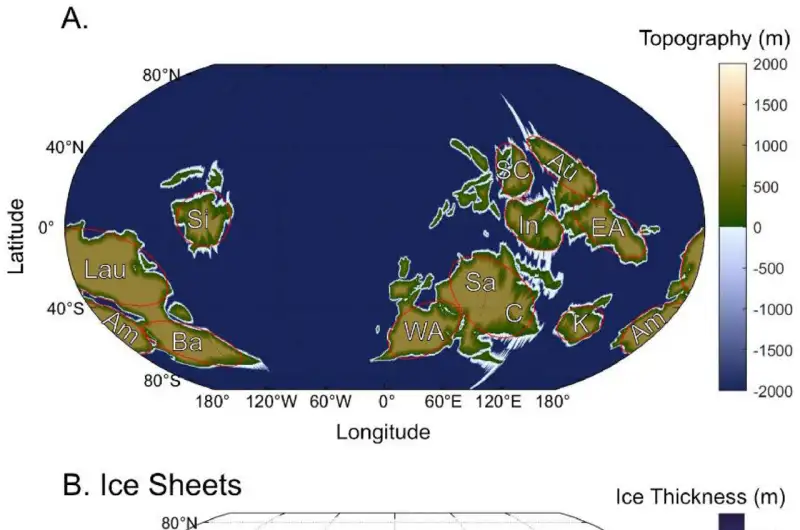Here’s a summary of the key points:
Snowball Earth OverviewDefinition: Periods when Earth’s ice sheets extended to equatorial regions due to runaway ice-albedo feedback.Cryogenian Period: Characterized by two major glaciations:Sturtian Glaciation (~57 million years).Marinoan Glaciation (~15 million years).Deglaciation and Climate TransitionTransitioned from extreme cold to a greenhouse climate.Resulted in intense continental weathering, global sea level rise, and the emergence of complex multicellular life.Marinoan Deglaciation ResearchFocused on sea level changes during the Marinoan deglaciation in the Naukluft Mountains, Namibia.Identified two phases of water depth fluctuations linked to:Global sea level changes.
Glacial isostatic adjustment (crustal deformation and gravitational effects from melting ice).Key FindingsDuration of Deglaciation Impacts Sea Levels:Shorter Events (2,000 years): Led to a single phase of sea level rise or rise and fall.Longer Events (~10–30,000 years): Caused multiple sea level rise and fall cycles.Mechanisms at Play:Crustal Deformation: Land rebounded from the melting ice’s weight, altering sea levels.
Gravitational Effects: Dissipated ice sheet gravity caused ocean water to redistribute.Global Sea Level Rise: Meltwater contribution.Geological Evidence:Rocks in the Naukluft Mountains reflect tens of meters of water depth changes.These patterns may align with long-duration deglaciation.Implications for Future ResearchHighlights the need for integrating geologic observations with climate modeling.
Suggests the complexity of Snowball Earth deglaciation had profound effects on Earth’s climate and life evolution.The research advances our understanding of Earth’s ancient climate transitions and their role in shaping early ecosystems.

















+ There are no comments
Add yours